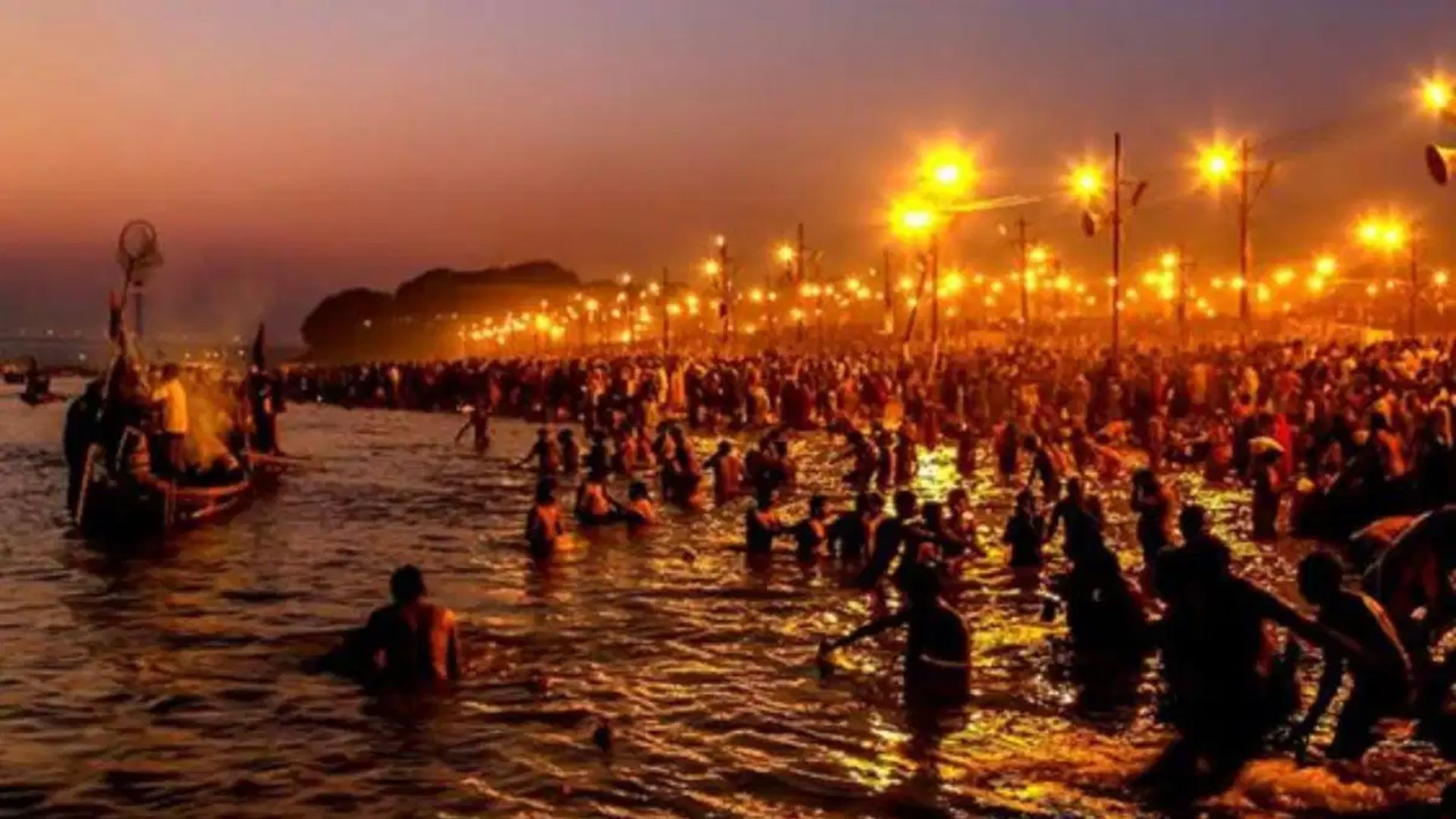The Maha Kumbh Mela is a monumental event in the world of spirituality, held once every twelve years at select locations in India. It is one of the largest peaceful gatherings on Earth, drawing millions of pilgrims, sadhus, and spiritual seekers. The Mela stands as a symbol of devotion, faith, and cultural heritage, playing a crucial role in shaping the spiritual fabric of India.
1. The Sacred Rituals of Kumbh Mela
At the heart of the Kumbh Mela is the act of “Snan” (bathing) in the holy river, believed to purify the soul and cleanse sins. The “Shahi Snan” or royal bath is the highlight, when revered saints and sadhus bathe at the most auspicious time, followed by thousands of devotees. The belief is that by immersing themselves in the sacred waters, pilgrims attain moksha (liberation) and rid themselves of past karmas.
The exact timing of the bath is determined by astrological calculations, making it one of the most significant rituals for devotees. These bathing rituals occur at different locations in India, with Prayagraj being the site for the grand Maha Kumbh, where the confluence of the Ganges, Yamuna, and the mythical Saraswati river takes place.
2. The Role of Sadhus and Ascetics
The presence of sadhus and ascetics is central to the Kumbh Mela. They are revered as spiritual leaders who have renounced worldly pleasures in pursuit of a higher spiritual calling. The sadhus participate in the royal bath, and their processions are among the most awaited events at the Mela.
The Naga sadhus, who are known for their distinctive attire (or lack thereof), are often the most prominent figures during the event. Their lifestyle, commitment to spirituality, and deep connection to Hindu rituals make them a significant part of the Mela’s tradition. Pilgrims often seek their blessings for spiritual growth and guidance.
3. Spiritual Discourses and Religious Teachings
The Kumbh Mela is not just about bathing in holy waters, but also about spiritual learning. Renowned spiritual leaders from various sects and traditions conduct discourses and provide teachings on Hindu philosophy, meditation, and yoga. These gatherings offer an opportunity for pilgrims to engage with and learn from some of the most respected figures in the religious world.
Temples and ashrams set up temporary residences at the Mela grounds, hosting religious events such as satsangs (spiritual gatherings), kirtans (devotional singing), and bhajans (prayers). These spiritual practices elevate the entire atmosphere of the Mela, enriching the experience for visitors.
4. Cultural Celebrations and Festivals
The Maha Kumbh Mela is not just a religious event; it is also a celebration of India’s vibrant culture and traditions. Folk music, dance performances, and cultural exhibitions are part of the Mela’s festivities. The event brings together people from all parts of India and even abroad, uniting them through shared spirituality and joy.
The cultural significance of the Mela is also seen in the various regional and traditional foods offered at the event. From simple yet nutritious offerings like khichdi (a mixture of rice and lentils) to elaborate sweets made of jaggery and sesame, the Maha Kumbh Mela showcases India’s rich culinary diversity.
5. The Importance of Kumbh in the Modern Era
In today’s fast-paced world, the Maha Kumbh Mela serves as a reminder of the power of spirituality, reflection, and unity. For many, it offers a chance to disconnect from the pressures of daily life and reconnect with deeper, eternal truths. With millions of people coming together, it highlights the importance of collective devotion, prayer, and community.
In the modern era, the Maha Kumbh Mela has also become a symbol of India’s efforts to promote spiritual tourism, attracting visitors from all corners of the world. For tourists and spiritual seekers, it’s a once-in-a-lifetime experience to witness such a grand, spiritually charged event.
6. Challenges and Organization
Organizing the Kumbh Mela is a monumental task, with the Indian government and local authorities ensuring the safety, health, and well-being of the millions of people who attend. Temporary infrastructure such as roads, medical camps, and sanitation facilities are set up to accommodate the large crowds. The event also sees strict measures for crowd control, given the large number of pilgrims attending from all over the country.
ALSO READ: Mahakumbh Dome City: Luxury Stay with Room Charges from ₹41,000 to ₹1,10,000




